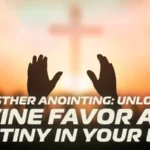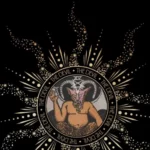Contents
- The Science Behind Fairy Rings
- Fairy Rings in Folklore
- Interpreting the Spiritual Meaning
- Connection to Otherworldly Entities
- Embracing the Fairy Ring Energy
- Conclusion
-
Frequently Asked Questions
- 1. Are fairy rings harmful to my lawn?
- 2. Can fairy rings spread to other areas?
- 3. Are fairy rings a sign of a fungal infection?
- 4. Can I eat the mushrooms growing in a fairy ring?
- 5. How long do fairy rings last?
- 6. Can I remove a fairy ring from my lawn?
- 7. Do fairy rings have any cultural or symbolic significance?
- 8. Are fairy rings only found in grassy areas?
- 9. Can fairy rings be found all around the world?
- 10. How can I protect and nurture a fairy ring in my lawn?
- References
The Science Behind Fairy Rings
Fairy rings are natural phenomena that can be found in meadows, lawns, and grassy areas. These intriguing circular patterns consist of a darker ring or arc of vegetation, with mushrooms often growing on the outer edge. The formation of fairy rings is a result of an underground network of fungi called mycelium. Mycelium, which is composed of thread-like structures called hyphae, spreads outwards, consuming organic matter in the soil. As the mycelium grows, it releases enzymes that break down the organic matter, providing nutrients to the fungi. Over time, this nutrient-rich zone causes vigorous growth of grass, resulting in the lush, darker ring. The mycelium continues to expand outward, forming a new ring after several years. This growth pattern explains why fairy rings can become larger over time.
1. Formation of Fairy Rings
The formation of fairy rings begins with the introduction of fungal spores into the soil. These spores can be dispersed through the air or carried by animals. When favorable conditions are present, such as moisture and organic matter, the spores germinate and grow into mycelium. The mycelium then spreads outwards in a radial pattern, forming the characteristic circle or arc shape. This growth pattern is influenced by various factors, including the availability of nutrients, soil composition, and environmental conditions. As the mycelium expands, it consumes nutrients from the soil and releases enzymes that break down organic matter, creating a nutrient-rich zone. This abundance of nutrients promotes the growth of grass, resulting in the darker ring or arc. Over time, the mycelium continues to grow and expand, forming new rings and perpetuating the cycle of fairy ring formation.
2. Fungal Explanation
- Fairy rings and their formation can be attributed to fungi: The fungi responsible for creating fairy rings belong to a group called basidiomycetes, specifically the species Marasmius oreades. These fungi form symbiotic relationships with the roots of plants, including grass. The mycelium of the fungi grows outward in a circular pattern, feeding on decaying organic matter in the soil. As the mycelium expands, it creates a zone of nutrient-rich soil, which promotes the growth of the grass and other plants in the ring. This results in the distinct darker ring of vegetation commonly seen in fairy rings.
- The underground mycelium network: The mycelium network of the fungi extends underground, creating an interconnected web of hyphae. This network assists in the decomposition of organic matter, recycling nutrients back into the soil. The mycelium also helps with water absorption and creates a symbiotic relationship with the surrounding plants, exchanging nutrients for carbohydrates. The expansive mycelium network continues to grow and spread, forming new rings over time.
- Mushrooms as reproductive structures: The mushrooms that often appear on the outer edge of fairy rings are the fruiting bodies of the fungi. These mushrooms release spores, allowing for the dispersal and reproduction of the fungi. The sporulation process assists in the fungi’s life cycle and perpetuates the formation of new fairy rings in different areas.
Fairy Rings in Folklore
Fairy rings have captivated the human imagination for centuries and have been prominent in various folklore and cultural beliefs. In ancient legends and myths, fairy rings were often associated with portals to the fairy realm, where these mythical beings resided. According to Celtic folklore, stepping into a fairy ring could lead to enchantment or even being transported to the fairy world. In some cultural beliefs, fairy rings were viewed as gathering places for fairies and other nature spirits to dance and celebrate. These magical circles were seen as sacred spaces and were often treated with reverence. Additionally, churchyard rings, which were fairy rings found in the graveyards, were believed to protect the buried souls and ward off evil spirits. The symbolism and interpretations of fairy rings vary across different cultures, but their connection to the supernatural and mystical world remains consistent.
1. Ancient Legends and Myths
- Ancient legends and myths hold a plethora of fascinating tales related to fairy rings. In Celtic folklore, it is believed that fairy rings are enchanted portals to the realm of fairies and other magical creatures. Stepping inside a fairy ring could transport a person into the mystical world or subject them to the mischievous tricks of the fairies. Norse mythology tells of the “Elf Dance,” where fairies would dance in circles, leaving behind the circular patterns as evidence of their revelry. In English folklore, fairy rings were thought to mark the spots where fairies would hold their midnight gatherings, creating a strong sense of enchantment and wonder. These stories showcase the enduring fascination and belief in the otherworldly origins of fairy rings.
2. Cultural Beliefs
Fairy rings have been a subject of fascination and superstition in various cultures around the world. In Celtic folklore, these rings were believed to be created by fairies dancing in a circle on moonlit nights. It was considered dangerous to step inside a fairy ring as it could cause one to be trapped in the fairy realm or subjected to the mischief of the fairies. In Scandinavian cultures, fairy rings were associated with elves and were seen as portals to their realm. In some Native American tribes, these rings were believed to be the result of dancing spirits or the footprints of the gods. The cultural beliefs surrounding fairy rings often highlight the mystical and enchanting nature of these formations, connecting them to other realms and beings beyond our understanding.
3. Churchyard Rings
Churchyard rings are a fascinating aspect of fairy ring folklore. These specific types of fairy rings are often found in and around churchyards, adding an air of mystique and spirituality to their presence. According to folklore, churchyard rings are believed to be formed by the dance of fairies during the night. It is said that fairies would gather in these circles to celebrate or hold their enchanting rituals. In some legends, it is believed that churchyard rings are portals to the fairy realm, connecting our world to the magical realm of fairies and other mystical beings. These mysterious circles are considered sacred, and people were warned against stepping into them, as it was believed to anger the fairies and bring misfortune. The connection between churchyards and fairy rings has deep cultural significance and reflects the intertwining of folklore and spiritual beliefs in various cultures throughout history.
Interpreting the Spiritual Meaning
Beyond the scientific explanation, fairy rings hold a deep spiritual meaning for many. These enchanting circles have long been associated with mystical realms and magical energies. One interpretation is that fairy rings serve as gateways to the fairy realm, a place where fairies and other nature spirits reside. According to folklore, stepping inside a fairy ring could connect you with these ethereal beings and even grant you their protection and guidance. It is also believed that fairy rings act as magical energy vortexes, harnessing and amplifying the Earth’s natural energies. Some people use these vortexes for meditation, healing, and spiritual practices. Another spiritual interpretation of fairy rings is that they are a symbol of good fortune and abundance. Finding a fairy ring in your surroundings is seen as a blessing, indicating that positive opportunities and prosperity may come your way. Additionally, fairy rings are associated with healing and renewal. They are believed to have regenerative properties, capable of revitalizing the land and bringing about growth and rejuvenation. It is said that standing or sitting within a fairy ring can help restore vitality and promote overall well-being.
1. Gateway to the Fairy Realm
Fairy rings have long been associated with a gateway to the fairy realm in folklore and mythology. According to legends, fairies are believed to use these rings as portals between their enchanted world and our own. It is said that if you step inside a fairy ring, you might be transported into the magical realm of the fairies, where time flows differently and fantastical creatures reside. These enchanting gateways are often regarded as sacred spaces, where humans can connect with the mystical energies of the fairy realm. They are believed to serve as a link between the physical world and the realm of spirits and supernatural beings. It is important to approach these gateways with respect and reverence, as they are believed to hold great power and significance in the spiritual realm.
2. Magical Energy Vortex
3. Symbol of Good Fortune
- Fairy rings have long been associated with good fortune and luck in various cultures and folklore traditions. These enchanted circles were believed to bring blessings and positive energy to those who encountered them. In some European cultures, it was said that stepping inside a fairy ring could bring you wealth and abundance.
- In Irish folklore, fairy rings were considered to be gateways to the realm of the fairies, and anyone who entered the ring risked being whisked away into their magical world. However, if you were fortunate enough to witness a fairy dance inside the ring, you would be rewarded with extraordinary luck.
- The belief in the luck and fortune associated with fairy rings is not limited to Europe. In many Native American cultures, encountering a fairy ring was seen as a sign of good fortune and a blessing from nature spirits. It was believed that walking through a fairy ring could bring prosperity and protection.
4. Healing and Renewal
Fairy rings have long been associated with healing and renewal in spiritual and folklore traditions. Some believe that stepping inside a fairy ring can bring about physical and emotional healing. It is said that the energy within the ring can help restore balance and vitality to those who enter. Additionally, fairy rings are seen as symbols of renewal and transformation. Just as the mushrooms within the ring emerge and grow, it is believed that being near a fairy ring can aid in personal growth and the shedding of old patterns. The circular shape of the ring represents the cyclical nature of life and the continuous process of renewal. It is believed that spending time near a fairy ring can help individuals let go of the past and embrace new beginnings. Whether you see fairy rings as a mystical gateway or simply as natural formations, their association with healing and renewal adds to their enchanting allure.
Connection to Otherworldly Entities
Fairy rings have long been associated with otherworldly entities and mystical beings, adding to their enchanting allure. One of the most common connections is with fairies and nature spirits. In folklore, it is believed that fairy rings serve as gateways or portals to the fairy realm, where these magical creatures reside. It is said that stepping inside a fairy ring can transport you to a different dimension or allow you to interact with the fairy folk. Another mystical connection to fairy rings is with other mythical beings such as elves, gnomes, and even spirits of the deceased. Some cultures believe that these entities use fairy rings as meeting places or gathering spots. The circular shape of fairy rings is often associated with spirituality and symbolism, representing the cyclical nature of life and the interconnectedness of all things.
1. Fairies and Nature Spirits
Fairies and nature spirits have long been associated with fairy rings. In folklore and mythology, fairies are often believed to be magical beings who inhabit the natural world. It is believed that fairy rings serve as gateways or portals to the fairy realm, enabling fairies to travel between their world and ours. According to some beliefs, fairies gather and dance within the circular space of the fairy ring during the full moon, bringing a sense of enchantment and wonder. These mystical creatures are believed to be guardians of nature and can bring blessings or misfortune to those who encounter them. While there is no scientific evidence to prove the existence of fairies, the spiritual belief in their presence adds an air of mystery and magic to the phenomenon of fairy rings.
2. Other Mystical Beings
- Gnomes: Gnomes, also known as earth spirits, are often associated with fairy rings. These small and stout creatures are believed to reside within the earth and have a strong connection to nature. It is said that gnomes are guardians of the fairy realm and may appear near fairy rings to protect their realm from harm.
- Elves: Elves are mythical beings known for their grace and beauty. They are often depicted as elegant, slender creatures with pointed ears. In folklore, elves are associated with magic and are believed to have a deep affinity for the natural world. It is said that fairy rings may act as portals through which elves can travel between realms.
- Dragons: Dragons are legendary creatures that have captivated human imagination for centuries. While not directly associated with fairy rings, the presence of dragons in mythology and folklore adds to the mystical aura surrounding these natural formations. Dragons are often depicted as wise and powerful beings, and some tales suggest that they may be drawn to areas where fairy rings are present.
Embracing the Fairy Ring Energy
Embracing the fairy ring energy is a way to connect with the mystical and spiritual significance of these enchanting formations. Here are two ways to embrace the fairy ring energy:
1. Respect and Reverence: When encountering a fairy ring, it is important to approach it with respect and reverence. Understand that fairy rings are believed to be sacred spaces and gateways to the fairy realm. Treat the area around the fairy ring with care, avoiding trampling or disturbing the mushrooms or vegetation. Show gratitude for the beauty and mystery of the fairy ring.
2. Rituals and Offerings: Many people perform rituals or leave offerings at fairy rings as a way to honor the magical energy they embody. These rituals can range from simple gestures of appreciation to more elaborate ceremonies. Offerings might include flowers, crystals, or other natural items. Such rituals can be a personal way to connect with the fairy realm and invite positive energy into your life.
1. Respect and Reverence
When encountering a fairy ring, it is important to approach it with respect and reverence. These natural formations have long been associated with mystical and spiritual energies. Many believe that fairy rings serve as a pathway between our world and the realm of the fairies. To show respect, it is advised not to disturb or damage the fairy ring, as it is considered sacred. By treating the fairy ring with reverence, we acknowledge and honor the spiritual significance it holds. Some individuals may choose to perform a simple ritual or meditation to express their respect and connect with the energy of the fairy ring. Remember, maintaining a respectful attitude towards nature and its wonders is essential in embracing the energy of the fairy ring.
2. Rituals and Offerings
Rituals and offerings play a significant role in embracing the energy of fairy rings. Many believe that these rings serve as portals to the fairy realm, and by performing specific rituals and offering gifts, one can establish a connection with the mystical beings that reside within. Common rituals include circling the ring three times while visualizing intentions or wishes, leaving small gifts like shiny trinkets or flowers, or pouring a libation of water or milk as an offering. These acts are believed to show respect and reverence to the fairies, and in return, it is said that the fairies may bestow blessings or grant wishes to those who honor them in this way. It is important to approach these rituals with sincerity and an open heart, acknowledging the unseen presence of the mystical realm.
Conclusion
- In conclusion, fairy rings have a captivating blend of scientific and spiritual significance. The science behind fairy rings helps us understand their formation through the growth of underground fungi and the resulting pattern of grass and mushrooms. However, these natural phenomena have also become intertwined with folklore and spirituality, with ancient legends and cultural beliefs attributing mystical meanings to these enchanted circles. The spiritual interpretations range from gateways to the fairy realm and energy vortexes to symbols of good fortune and healing. Furthermore, fairy rings are said to be connected to otherworldly entities such as fairies and nature spirits, adding to their enigmatic allure. To fully embrace the fairy ring energy, it is essential to approach them with respect and reverence, and some people even perform rituals and offerings in their presence. So, the next time you stumble upon a fairy ring, take a moment to appreciate the beauty and mystery they hold.
Frequently Asked Questions
1. Are fairy rings harmful to my lawn?
No, fairy rings themselves are not harmful to the grass in your lawn. In fact, the darker ring of grass often appears more vibrant and lush due to the nutrient-rich zone created by the underground fungi.
2. Can fairy rings spread to other areas?
Yes, fairy rings have the capability to expand and form new rings over time. The underground mycelium network can continue to grow outward, causing the appearance of additional fairy rings.
3. Are fairy rings a sign of a fungal infection?
While fairy rings are caused by fungi, they are not necessarily a sign of a fungal infection in your lawn. The fungi responsible for fairy rings are typically harmless and do not cause any damage to the grass.
4. Can I eat the mushrooms growing in a fairy ring?
It is generally recommended to avoid consuming mushrooms found in fairy rings, unless you are an experienced mycologist. Some mushrooms growing in fairy rings can be toxic or hallucinogenic, and it can be challenging to accurately identify them.
5. How long do fairy rings last?
The lifespan of a fairy ring can vary. Some fairy rings may only last for a few months, while others can persist for several years. The growth and lifespan of fairy rings depend on factors such as environmental conditions and the type of fungi present.
6. Can I remove a fairy ring from my lawn?
Removing a fairy ring completely from your lawn can be challenging, as the underground mycelium network can be extensive. It is best to embrace the unique beauty and symbolism of a fairy ring rather than trying to eradicate it.
7. Do fairy rings have any cultural or symbolic significance?
Yes, fairy rings hold cultural and symbolic significance in various folklore and spiritual beliefs. They are often associated with mystical creatures, good fortune, and gateways to other realms.
8. Are fairy rings only found in grassy areas?
No, fairy rings can also occur in forests, woodlands, and other natural habitats. They may appear as circular patterns of vegetation or mushrooms, depending on the environment.
9. Can fairy rings be found all around the world?
Yes, fairy rings can be found in different parts of the world. They have been documented in various countries and cultures, each with their own interpretations and beliefs associated with them.
10. How can I protect and nurture a fairy ring in my lawn?
To protect and nurture a fairy ring in your lawn, it is important to avoid using chemical pesticides or fertilizers that can harm the fungi. Instead, focus on maintaining a healthy lawn through regular watering, mowing, and aerating.







